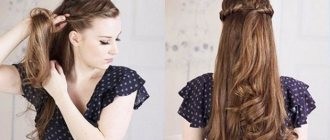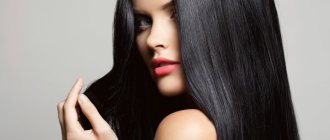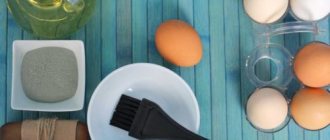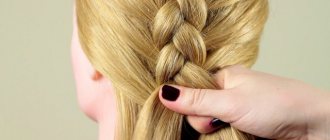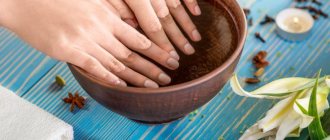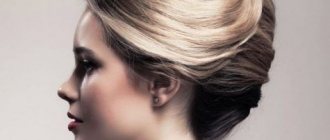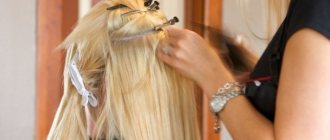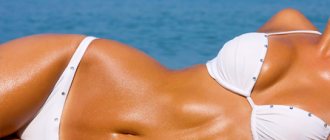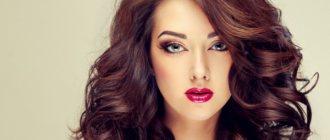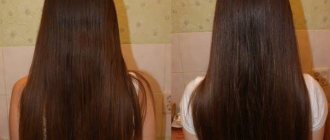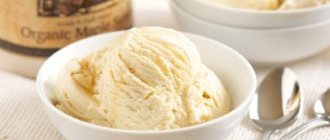Scalp peeling as one of the ways to care for your hair and scalp is absolutely beneficial. During this procedure, the top layer of the epidermis is removed and blood circulation is significantly improved, which leads to cleansing of the scalp, saturation of the hair roots with nutrients, getting rid of dandruff and other diseases. What does it do to your hair? Hair becomes healthy, strong and grows faster. What does this give you, dear girls? Of course, attractiveness, self-confidence and well-groomed appearance.
Variety of means
Having realized that the procedure can improve the health of your hair, you should then figure out how it can be done.
Traditionally used for peeling:
- special gels, shampoos for deep cleansing;
- sea salt;
- black bread;
- essential oils: mint, jojoba, lavender, tea tree;
- Castor oil;
- masks with onions, egg yolk;
- herbal infusions.
These products are actively used when peeling the head at home. Depending on what you choose will determine how deep the peel will be. For example, an onion mask is suitable for light exfoliation, and sea salt is suitable for deep exfoliation.
How to make a choice?
When choosing a specific product, you need to be guided by something. After all, for now this is a simple list, a simple enumeration. That is why we propose to consider how to use each tool, and, more importantly, we will determine what advantages each of them has.

Sea salt and more
It is necessary to use medium or fine salt. It is rubbed into the roots of the hair with massage movements for 3-5 minutes, and then, to avoid evaporation and retain heat, put on an insulating cap or, in its absence, a plastic bag or film. Then everything is left for half an hour to achieve the desired effect. After the time has elapsed, wash off the salt with shampoo or apply a mask, and then use shampoo. The second option, apparently, is better.
Salt is applied to dry or damp hair. An analysis of the forum “head peeling reviews” suggests that it is better to apply sea salt to slightly wet hair, since then it does not fall off and is rubbed in quite quickly.
But, whatever you decide, remember: the skin is a delicate structure, and therefore, if you rub salt too intensely, you can scratch the scalp.

If you peel with salt, you can additionally use kefir, yogurt, vegetable oil, or any essential oil. But there are some peculiarities. So, kefir and yogurt can drain from your hair, carrying salt with it, which means the procedure will need to be carried out longer. But oil, on the contrary, will provide the skin with additional nutrition.
Advantages: peeling the head with salt, if you add oil or after the procedure, first apply a mask (purchased or made yourself), and then shampoo, will become not just a way of cleansing, but also a way of nutrition and healing.
The best products for the peeling procedure
Before using salt peeling, you need to know some rules, which I suggest you familiarize yourself with.
If you have wounds, scratches or other damage on your scalp, do not use salt peeling so that salt does not get into the wounds and this does not cause discomfort, burning, or irritation.
If you have sensitive scalp, use peeling with caution or avoid it altogether. It happens that when you start applying sea salt to your scalp and feel discomfort, in this case, rinse everything off with water.
How often do you do salt peeling for hair? It is also not advisable to use salt peeling frequently. You can use it once every two weeks, but for oily skin you can use it once a week. It is optimal to do 3-6 procedures, and then take a break from 3 to 6 months.
You should only apply salt to damp hair, not dry hair.
Everything is quite simple. Sea salt is used both in pure form and in mixture with other products. In addition, masks and soft hair scrubs with salt are used.
Another thing I want to draw your attention to is that after salt peeling, cosmetic hair treatments work much more effectively.
After peeling, hair becomes light, fresh, and very soft to the touch.
For peeling, we will need to mix three tablespoons of fine sea salt with two tablespoons of your balm, if you wish, you can add a few drops of essential oil, I usually take lavender oil, I really like it.
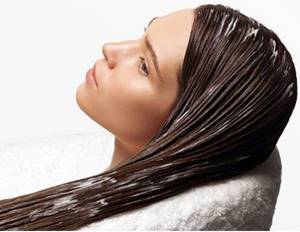
Burdock oil, which can be bought at any pharmacy, is also used to strengthen hair; various hair masks are prepared with it. A wide variety of masks with burdock oil can be found in my article on the blog “Burdock oil for hair.” Also from the article you will learn how oil affects hair and helps strengthen it.
Essential oils for hair loss. But, usually essential oil is used based on what problem you want to deal with. For example, essential oils of cedar, tea tree, pine, juniper, ylang-ylang, and rosemary are suitable for hair loss.
Essential oils for oily hair. If you have oily hair, then lemon oil, lavender oil, lemon balm, bergamot, grapefruit, and tea tree oil are more suitable for you.
Essential oils for dandruff. But for dandruff, all citrus essential oils are more suitable for you; for example, I really love orange and lemon oil, rosemary, geranium, tea tree, and lavender.
Essential oils for dry hair. But if your hair is dry, then use jasmine, chamomile, rose, sage, and myrrh oil.
Apply a mixture of salt and balm to damp hair, rubbing, massaging the scalp, leave for 10 minutes, and then rinse with shampoo.
The second peeling option is this. You need to take three spoons of fine sea salt and mix it with water until it becomes pasty, add a few drops of the essential oil you need, depending on what problem you need to deal with.
The main task of peeling is to remove the keratinized top layer of skin cells, remove excess oil from the scalp, as well as all remnants of cosmetic products from the skin and hair. After peeling, hair becomes soft, light and grows faster.
Salt and baking soda are also used to cleanse the scalp. Fine sea salt is mixed in equal proportions with soda and diluted with water so that the mass is mushy. Apply to damp scalp and damp hair, rinse with shampoo. Baking soda softens and disinfects the scalp, and also dries it a little, removing excess oil.
Masks are also used to strengthen hair. One of these masks, for oily hair, is to mix kefir and fine salt in equal proportions and rub into the scalp, rinse with shampoo.
If you have your own peeling recipes for the scalp, then share them below in the comments, I will be grateful.
And remember that salt for the scalp should be used with caution; if there are wounds or microcracks on the skin or your skin is very sensitive, you should not use salt peeling.
Head peeling is a useful procedure for every person. Its beneficial effect is based on the mechanical or chemical action of the agents used. The mixtures delicately remove dead particles from the skin.
We suggest you read: Causes of hair loss in teenagers
At the same time, impurities, traces of remaining cosmetic compositions, sebaceous and sweat secretions are removed from the skin.
This action increases blood circulation, which has a positive effect on the saturation of the hair roots with the necessary substances.
In addition, after this procedure the tone improves, the follicles receive excellent nutrition. All this accelerates hair growth, and its condition noticeably improves.
Head peeling is carried out in a salon or at home. For the procedure, products from stores and pharmacies or formulations prepared at home are used.
The frequency of manipulation is determined based on hair type:
- the tendency of the scalp to become oily requires health measures at least once a week;
- sensitive and dry epidermis needs peeling 2 times a month;
- Recent hair dyeing or lamination is a reason to temporarily abandon the procedure.
There are health procedures that tend to work in a certain direction:
- Peeling for hair growth. Solves the problems of those who are concerned about the slow lengthening of strands. With the help of ongoing cosmetic measures, they achieve the activation of cellular metabolism with the help of an accelerated flow of beneficial ingredients and oxygen to the hair growth area. As a result, the “sleeping” hair follicles “wake up” and hair growth resumes. Strands also grow faster under the influence of a peeling mask, rich in microelements, vitamins, and plant extracts.
- Cleansing scalp peeling. With its help, skin is cleansed, languishing from excessive secretion of fat from the sebaceous glands. The scrub normalizes the functioning of fat secretion, eliminates unaesthetic gloss in the root part of the hairline and untidiness of strands. The hair takes on a fresh and clean look for a longer time.
- Regenerating peeling. Indicated for healing hair damaged by negative factors. These are, for example, UV radiation, hard water, depigmentation, etc. The curls dry out, the epidermis on the head peels. The procedure with a restorative effect achieves cleansing of dry scalp, in-depth nutrition and hydration with the ingredients contained in the mixtures.
- Anti-dandruff peeling. Helps get rid of oily or dry seborrhea and prevent it from returning again. Effective ones include a salt-based scalp procedure. Adding antifungal ingredients to the composition will provide stunning results.
Experts also advise paying attention to procedures such as hair plasma lifting, special fillers, Honma Tokyo Botox, etc.
In a beauty salon or hairdresser, cosmetologists most often recommend choosing one of 4 types of peeling:
- Gas-liquid. It is carried out using a hardware method. Under pressure, a finely dispersed hydrooxygen stream is introduced into the device through the nozzle. Often the mixture contains water, liquid sodium chloride, whey containing vitamins, minerals, acids and plant extracts, etc. The doctor, assessing the skin and hair, creates a mixture of active ingredients and adjusts the flow pressure. The result of gas-liquid peeling of the head is: deep cleansing and healing of tissues, massaging the head, the influence of which extends to the human body.
- Galvanic hardware method. It works by combining galvanic current with medicinal and cosmetic products. The cosmetologist selects the compositions, guided by the condition of the epidermis on the head, hair type and problems that need to be solved. During the event, the peeling mixture is rubbed into the skin of the scalp. Then the master runs a comb with hollow teeth along the strands and skin surface; there are electrodes inside them (the strands are an excellent conductor of electrical impulses). This manipulation opens the skin pores, removes impurities from the inside, and saturates the epidermis with useful components.
- Chemical method. It involves applying fast-acting mixtures to the skin that soften and dissolve keratinized tissue along with impurities. Epidermal regeneration processes are synchronously enhanced, metabolic reactions are accelerated, and hair follicles are filled with life-giving ingredients. For this purpose, organic acids (malic, lactic, almond, tartaric, etc.) and inorganic (salicylic, retinoic, azelaic, etc.) are used. Healing acid peeling is especially effective for dandruff and hyperkeratosis of the scalp.
- Biological innovative method. It is carried out with compositions based on bioactive floristic enzymes. They contain ingredients with restorative, moisturizing, anti-inflammatory effects, etc. The substances have a gentle effect on the skin and eliminate dead cells without adversely affecting vital tissues. Therefore, this peeling procedure can also be used by those with sensitive scalps. The method also fruitfully combats sebaceous seborrhea, since enzymatic substances are endowed with a sebum-correcting effect.
Specialists in salons use professional cosmetics. Manufacturers have made sure that such products provide deep cleansing and proper treatment of the scalp.
We invite you to read: Alerana against hair loss and hair growth, instructions for use
Here is a list of some popular professional peels:
- Nioxin. This product provides excellent nutrition and stimulates normal skin regeneration.
- Ollin. This is a shampoo with a peeling effect. It stands out for providing cells with important multivitamins.
- Schwarzkopf. It is also a shampoo that professionally cleanses hair and dermis.
- Lebel. With the help of this peeling, hair begins to grow faster. In addition, the product fights problem skin.
- Farmavita Amethyste Purify Peeling Mask. The mask helps to get rid of dandruff for a long time, remove excess fat and remaining impurities. Ideal for preparing the scalp and hair for medical procedures.
- Baking soda is a great helper in the fight against excess oily hair.
- It significantly reduces the active production of sebum and cleanses dirt well
- You can wash your hair with baking soda even without using shampoo
- It will remove dirt from your hair and also unclog the pores of your scalp. Baking soda is not suitable for dry skin, because it has a drying effect, which is not good for dry skin.
- To prepare the scrub, mix a couple of tablespoons of regular baking soda with water, then massage the skin. Baking soda rinses out of hair well
Baking soda cleanses pores well and harmlessly
- 2-4 tbsp. Sahara
- some shampoo
- 1 tsp olive oil
- a couple drops of essential oil
Brown bread is also good for hair
You will need crusts of black bread. They need to be poured with boiling water and left for several hours. After which the paste should be rubbed into the scalp.
Advantages: if you do a light scalp massage before peeling, which will improve microcirculation, then you will not need to use shampoo after the procedure.
The bread mask not only exfoliates the top layer of skin, but also cleanses the hair. What happens?
- Apply the paste and rub in - this is peeling;
- After this, we leave the bread on the hair for an hour, covering it with polyethylene - this is a mask;
- Then rinse with water (!) - this is the final stage of therapy.
In addition, bread (and this is confirmed by many masks using black bread as a component) in itself is good for hair. And this is another plus.

How to nourish your skin after peeling
A salt scrub helps to gently cleanse the skin, open pores, and improve breathing at the cellular level. As a result, all layers of the skin become much more sensitive to all substances.
You can use several recipes:
A mixture of chicken egg yolk and honey. The substance spreads evenly throughout the horse's coat and hair. After 15 minutes, wash off the mask with water. Composition based on castor oil and burdock oil. You can add a little fresh lemon juice to enhance the effect. After thorough mixing, apply to previously treated areas. This mask nourishes the skin and treats split ends in the hair. Chicken yolk, kefir and a spoonful of flour (oatmeal). After mixing, the mass is evenly distributed over the entire length of the hair. After it, the curls look healthy and become manageable.
There are also ones that are no less effective. They suit different hair and skin types, so choose them individually.
Oils: both essential and castor
As already noted, you can choose from the following types of oils: jojoba, tea tree, lavender, peppermint. Because it is they, thanks to their composition, that can produce a peeling effect.
The oil needs to be slightly warmed and rubbed into the scalp in a circular motion. Then cover your hair with polyethylene, and preferably with a towel on top to retain the heat as much as possible. After half an hour, all this is washed off with shampoo. Girls who have used oils, including castor, know well that oil is not washed off very readily. This means that you cannot do without shampoo with this type of peeling.
Benefits: oils are good for hair because their composition is a storehouse of valuable elements.
Masks, infusions, decoctions, or light peeling
All of them cleanse the hair to some extent and have an antibacterial effect. Just in order to enhance this effect, you need to select the appropriate composition, for example, actively include chamomile.
Benefits of home hair peeling
Hair exfoliation is an important procedure. It is needed by those who take care of their hair and always want to look good. The purpose of this peel is to remove all the old dead cells found on the scalp. Together with them, the sebum secreted by the pores and the remnants of cosmetics are washed away.
Hair peeling has a beneficial effect on healing the scalp. It is often used to prevent or treat dandruff, seborrhea or hair loss.
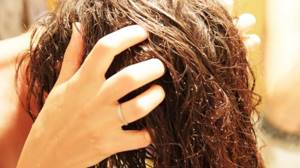
hair also needs exfoliation
Peeling gives regeneration of scalp cells. Thanks to this, the unnecessary layer is exfoliated, and the hair follicles receive nutrients and oxygen in a larger volume. Peeling promotes hair growth, hair health and the absence of any scalp diseases.
Of course, this procedure can be carried out in a salon, where the caring hands of a master can give you absolutely any peeling for money. A scrub made at home from natural ingredients will be much cheaper, more pleasant and healthier.
